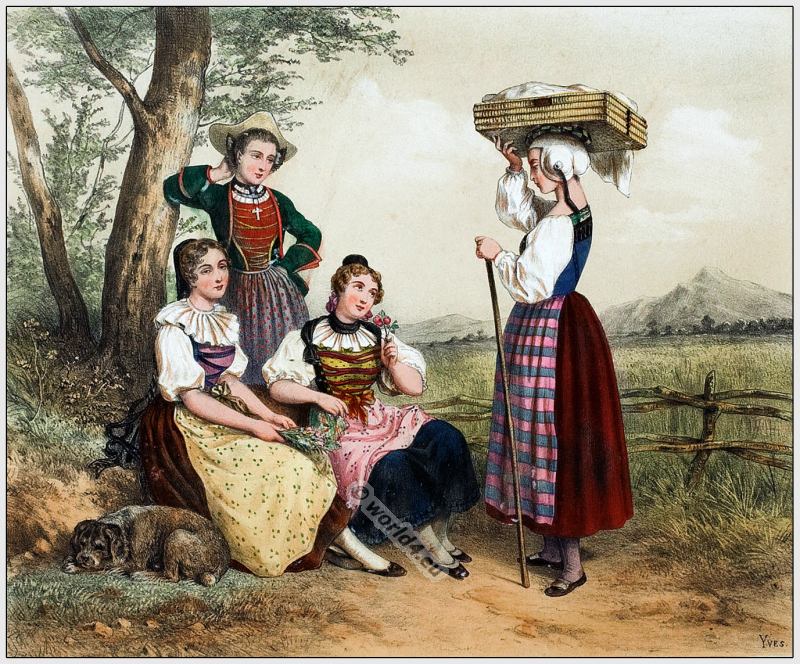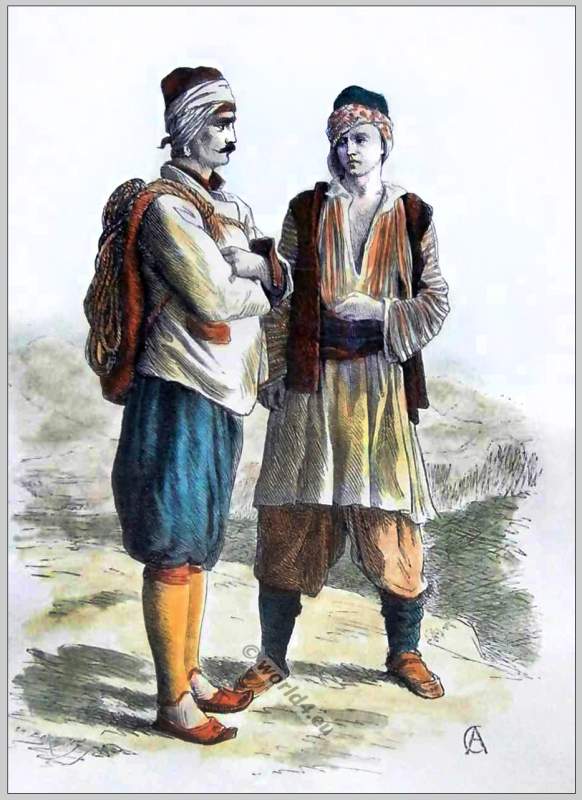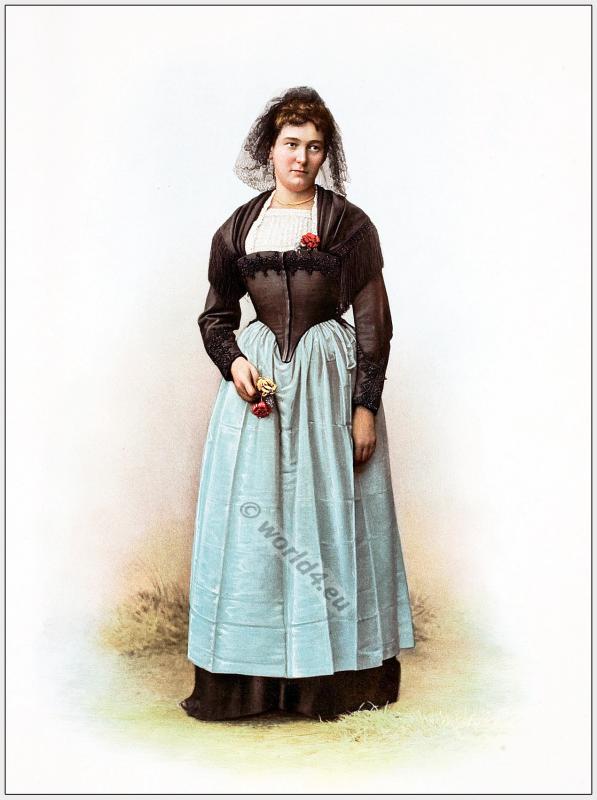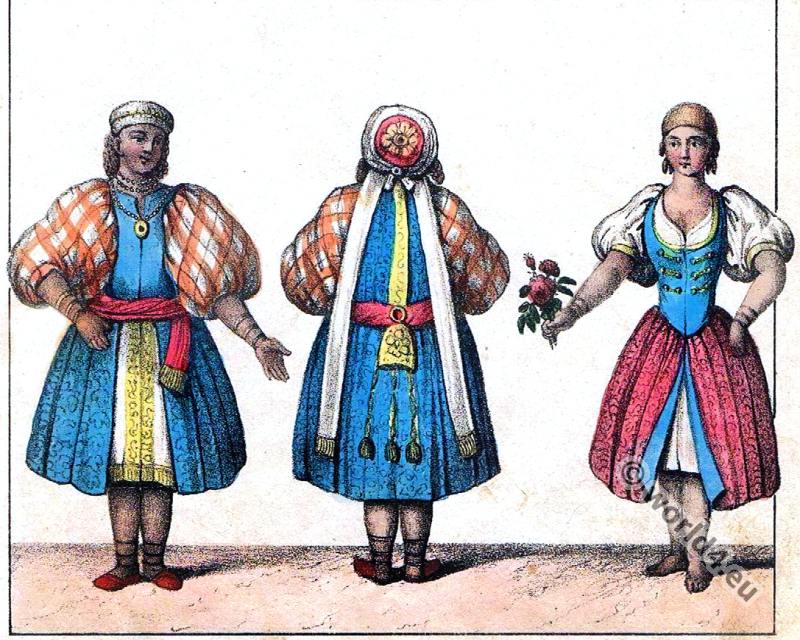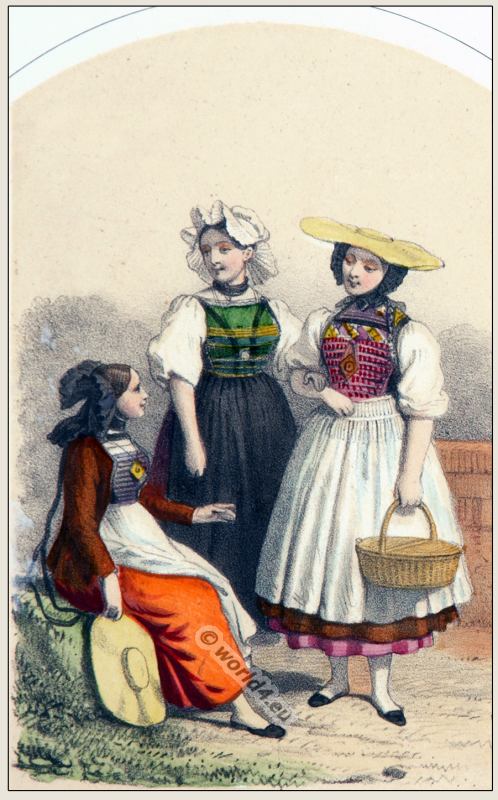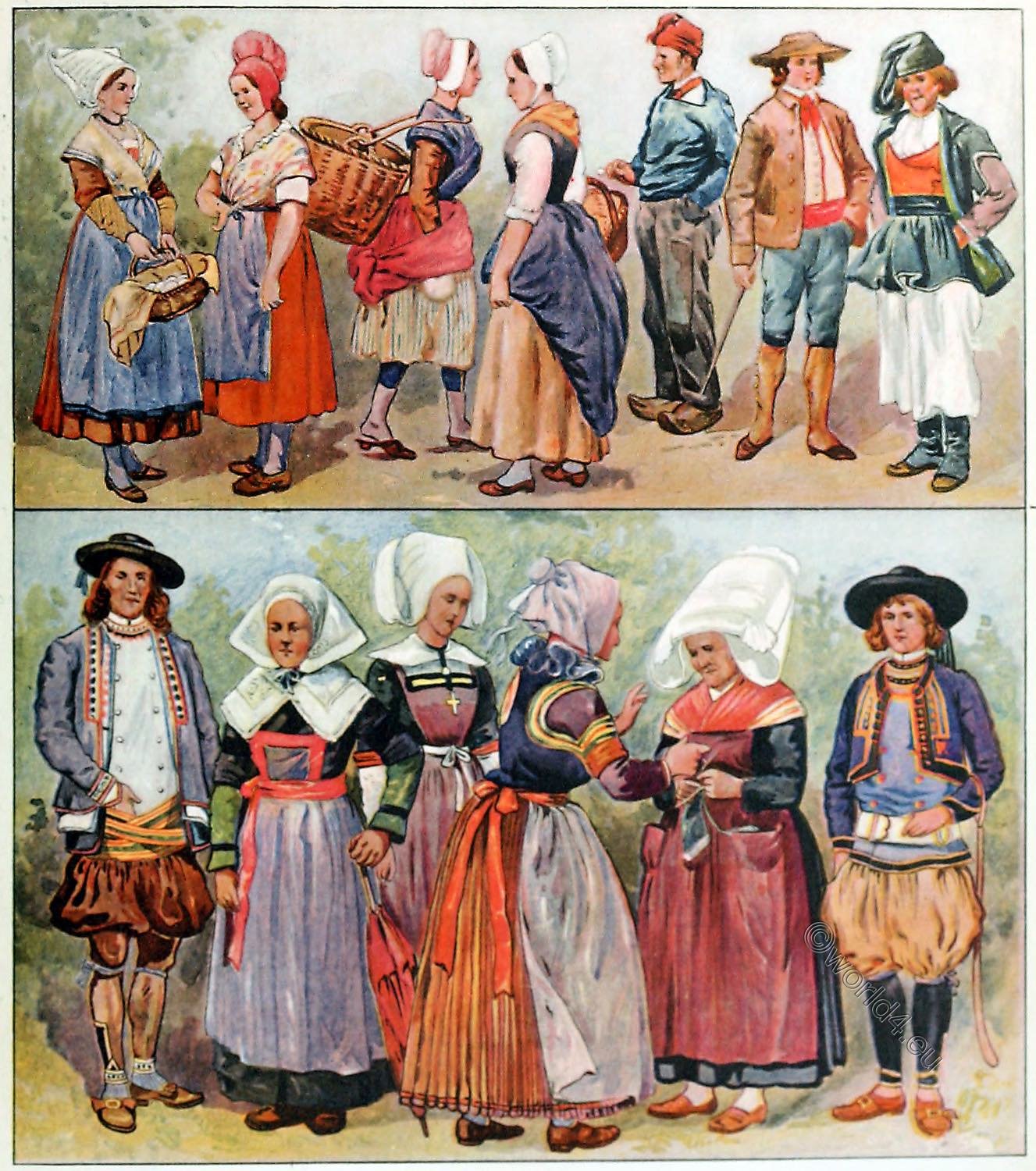
SWITZERLAND.
WOMEN’S COSTUMES FROM UNTERWALDEN, SANKT GALLEN, BERN, WALLIS, ZURICH, ZUG, LUCERNE AND BASEL.
Traditional costumes from the Swiss cantons
No. 1. Canton of Unterwalden. – The bodice fastened over the chest and at the neck is due to the climate of a landscape that is closed off to the south by mountains covered with perpetual snow.
The decoration and colour scheme of the fabrics that make up the bodice depends on the wearer’s personal taste. The front part is usually colourful, green and red patterned, the back part always black. The chains crossing over the chest are of silver filigree. The hair is usually put in braids with white ribbons woven into them. A white lace bonnet is sometimes worn on the head.
No. 2. Canton of Sankt Gallen. – In this canton, a lively industry flourishes in white and flannel goods, cloth and other fabrics, but mainly in bobbin lace and embroidery.
The costume of the woman also points to this sedentary activity: the long skirt and the low bodice that allows the arms to move freely. The dainty bonnet is a product of the local craftsmanship and taste, which is also evident in the fine composition of the colours.
Nos. 3 and 7. Canton Bern. – The short skirt worn by No. 7 is necessary because of mountain climbing. The coloured and embroidered stockings that were common in the past have now generally been replaced by white ones. The white linen of the Bernese women is famous. Their costumes are pretty and tasteful; only the women of Oberhassli disfigure themselves by padding their hips.
No. 3 is a woman from the Simmental. The bodice shows Italian cut; it is of black silk and trimmed with a black velvet stripe. The white shirt rises up to the neck. The ends of the plain breast cloth are fastened under the bodice. The sleeves, tightly fitting, form puffs at the elbows. Often a velvet tie is looped around the neck, from which silver chains hang down on the chest and are fastened to the belt. The headdress consists of a small cap of black satin, which sits on the back of the head and is trimmed with black lace. The dark skirt has a coloured border. The apron is fastened under the bodice. The Bernese costume has been preserved in its complete originality for the longest time.
No. 4. Canton of Valais. – French fashion has mostly blurred the characteristic features of the folk costume. All that remains of it is the hat, which has resisted all foreign influences.
No. 5 Canton of Zurich. – In the costume of the Zurich woman, dignified seriousness (the black skirt) is paired with cheerful colourfulness (red bodice with yellow, black-bordered bib).
No. 6. Canton Zug. – As the population of the canton of Zug is mainly engaged in agriculture, the costume of the farmers’ wives is based on this. Remarkable is the stiffened ruffle, reminiscent of a sunflower, which serves as a headdress.
No. 8. Canton of Lucerne. – The population of this canton also cultivates agriculture, which is why the female costume that goes with field work is related to that of the canton of Zug.
No. 9. Canton of Basel. – Like Bern, Basel is a mountainous city in which many streets rise like stairs. This explains the necessity for women to wear short skirts.
(After photographs by Braun & Co. in Dornach and after watercolours by Bastinos. For the text see: Simond, Voyage en Suisse; Raoul Rochette, Leures sur la Suisse 1819, 1820, 1821; C. V. de Sommerlatt, Description des vingt-deux Kantons de la Suisse, Bern 1840; Berlepsch; Schweizerkunde; W. Kaden, Schweizerland).
Source: History of Costume in Chronological Development by Albert Charles Auguste Racinet. Edited by Adolf Rosenberg. Berlin 1888.
Related
Discover more from World4 Costume Culture History
Subscribe to get the latest posts sent to your email.

